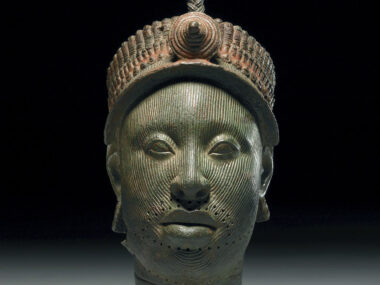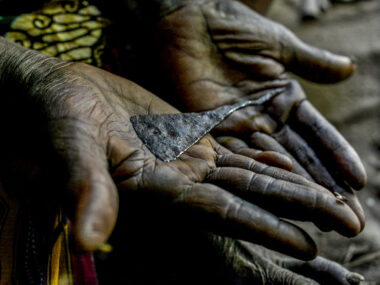Tribal marks hold a profound significance in various cultures around the world, serving as markers of identity, status, and heritage. These intricate patterns etched into the skin are more than just cosmetic adornments; they are symbols deeply embedded in the fabric of cultural traditions, carrying stories of lineage, belonging, and societal roles.
In this exploration, we delve into the rich tapestry of tribal marks, tracing their origins, cultural meanings, and their evolving significance in contemporary society.
The Cultural Practice of Tribal Marks

The practice of adorning the body with tribal marks dates back centuries, with roots entrenched in the traditions of indigenous communities across Africa, Asia, the Pacific Islands, and beyond. Each culture infuses its unique symbolism and rituals into the art of tribal marking, reflecting the values, beliefs, and social structures of the society.
In Africa, tribal marks have a particularly prominent role in cultural expression and identity formation. Among various ethnic groups such as the Yoruba, Igbo, Hausa, and Fulani, tribal marks serve as distinctive insignia, denoting clan affiliation, familial lineage, and even personal achievements. These marks are often applied during rites of passage, such as puberty ceremonies or initiation rituals, marking significant transitions in an individual’s life.
Patterns and designs of Tribal Marks

The patterns and designs of tribal marks vary widely, ranging from simple geometric shapes to intricate motifs inspired by nature, animals, or ancestral symbols. These markings are meticulously crafted by skilled artisans or traditional practitioners using techniques passed down through generations, ensuring the preservation of cultural heritage and the continuity of ancestral traditions.
Beyond their aesthetic appeal, tribal marks carry deep cultural meanings and social significance within indigenous communities. They serve as visual cues that convey a person’s social status, marital status, or even their role within the community. For example, certain marks may indicate royal lineage or noble descent, while others may signify warrior status or spiritual leadership.
Benefits of Tribal Marks
Tribal marks often serve as a form of identity authentication within traditional societies, allowing members to recognize and distinguish one another based on their markings. In this way, tribal marks foster a sense of belonging and solidarity among community members, reinforcing social cohesion and cultural continuity.
However, the practice of tribal marking has also been subject to scrutiny and debate, particularly in the context of modernity and changing societal norms. In recent decades, there has been a growing trend towards the abandonment or modification of tribal marks due to evolving perceptions of beauty, personal autonomy, and the influence of globalization.
Critics of Tribal Marks
Critics argue that the practice of imposing permanent markings on individuals, particularly infants and children, raises ethical concerns regarding consent, bodily autonomy, and the right to personal expression.
Additionally, the stigma associated with tribal marks, particularly in urban or cosmopolitan settings, has led some individuals to seek methods of concealment or removal, viewing their marks as impediments to social acceptance or professional advancement.
As a result, there has been a gradual decline in the prevalence of traditional tribal marks, especially among younger generations who may perceive them as outdated or culturally irrelevant.
However, this shift towards cultural assimilation and homogenization also raises questions about the preservation of indigenous heritage and the erosion of cultural diversity in an increasingly globalized world.
Despite these challenges, there remains a resilient attachment to tribal marks among certain communities, where they continue to be valued as symbols of cultural pride, resilience, and authenticity. Efforts to revitalize and reclaim traditional practices of tribal marking have emerged, driven by a desire to preserve cultural identity and promote intergenerational transmission of knowledge.
Furthermore, the resurgence of interest in indigenous cultures and heritage preservation has sparked a renewed appreciation for tribal marks as tangible expressions of cultural heritage and collective memory. Organizations and initiatives dedicated to cultural preservation and revitalization have played a crucial role in documenting, safeguarding, and celebrating the rich tapestry of tribal markings and their cultural significance.
conclusion
tribal marks are more than just physical adornments; they are living embodiments of cultural heritage, identity, and resilience. Despite the challenges posed by modernity and shifting societal norms, tribal marks continue to endure as powerful symbols of belonging, solidarity, and cultural pride within indigenous communities worldwide.
By embracing and preserving these sacred traditions, we honour the diversity and richness of human experience, ensuring that the legacy of tribal marks remains etched into the fabric of our collective heritage for generations to come.
Related Tags
Taiwo Olawuyi
Taiwo Olawuyi is a highly dedicated and passionate professional blogger, renowned for her ability to create captivating, informative, and engaging content in the realm of health and wellness. She holds a Bachelor's degree in Political Science from Olabisi Onabanjo University and a Master's degree in Adult Education from the prestigious University of Ibadan. Her profound passion for health and wellness, coupled with her unwavering dedication to her audience, serves as a constant source of inspiration and enlightenment for readers worldwide.










